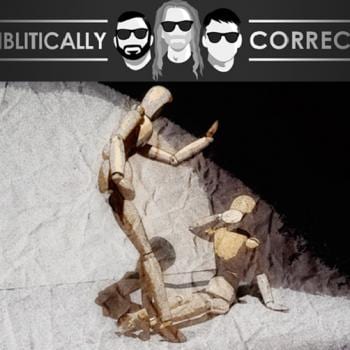
By Tommy Moehlman
Lessons from LARPing
Growing up, my pals and I commandeered a small wooded area where we played hide and seek after school. We spent a lot of time LARPing (that’s Live Action Role Playing for you muggles). We knew this place better than our own neighborhoods—which paths to travel, where poison ivy grew, and what patches of thickets and thorns to avoid. So we developed eyes to see the natural paths that guided our feet in and out of the woods.
Yet some of my friends never acquired this skill. They trampled through the woods oblivious to the natural paths. They broke down saplings, hobbled through thickets, and often emerged scraped, bruised, and riddled with poison ivy. The forest also suffered from their bumbling efforts, and the whole experience frustrated them.
Beyond Frustration
This sense of frustration captures many people’s experience of Bible reading. They spend hours and hours in unfamiliar terrain. It’s so unfamiliar because over 2000 years of history, culture, and language separate us from the text. So I’m not surprised when people tell me the Bible frustrates them. Indeed, the landscape of Scripture remains alien territory until we learn to read it like ancient people.
Like my childhood playground, Scripture possesses “natural features” that yield clues for interpretation. Such features include cultural practices, literary devices, and more. Someone must usually point them out to beginners. With experience, we begin to see them on our own. In this blogpost I highlight one feature I wish I knew when I first began reading the Bible.
Repetition
Repetition is the most common mode of expression that Bible authors used to communicate with readers. It fills just about every book of the Bible. So readers today must overcome the modern prejudice that repeating a word or phrase is mind-numbing and of little value. Consider the following examples.
Genesis 1
God said: Let there be light and there was light.
God saw the light; that it was good.
God separated the light from the darkness.
God called the light: Day! And the darkness he called: Night! (vv. 3-5)
The repetition in this passage emphasizes how God brought order out of chaos (Gen 1:2). The term “God” occurs four times followed by a verb. This pattern shapes Genesis 1 into two halves: on days 1-3 God forms landscapes, and on days 4-6 he fills them with animals and humans.
Exodus 14
In Exodus 14, the Israelites grumble to Moses shortly after God delivered them from slavery in Egypt.
Is it because there are no graves in Egypt that you have taken us out to die in the wilderness?
Now what have you done to us, bringing us out of Egypt?
Is this not the very word that we spoke to you in Egypt,
saying: Let us alone, that we may serve Egypt?
Indeed, better for us serving Egypt
than our dying in the wilderness. (vv. 11-12)
Notice how the word “wilderness” sandwiches four lines that end with the word “Egypt.” Such repetition highlights the irony of the passage. From Israel’s perspective, they once had life in Egypt but now they face death in the wilderness.
The word “serve” in this passage also occurs earlier in the book with reference to slavery and later where it refers to worshiping God. So the repetition of “serve” points both backwards and forwards. In doing so, it develops the key theme of “service” that occurs throughout the book.
Genesis 33
The Jacob story spans several chapters of Genesis and showcases numerous literary devices like word play, assonance, alliteration, and repetition. Though it is less clear in many English translations, repetition is a key feature in chapter 33 where Jacob prepares to meet his brother Esau.
For he said to himself:
I will wipe [the anger from] his face
with the gift that goes ahead of my face
afterward, when I see his face,
perhaps he will lift up my face!
The gift crossed over ahead of his face. (v. 20)
The repetition of face language in these verses raises the question of how Esau will receive his estranged brother whom he once sought to kill. Will he welcome him like a brother? Or will it be a conflictual “face off” between perennial rivals? This motif is all the more significant because “face” language occurs at other significant moments in the Jacob story. For example, immediately before he encounters Esau, Jacob wrestles with a dude who happens to be a divine being:
Jacob called the name of the place: Peniel [meaning: face of God] for: I have seen God,
face to face, and my life has been saved. (Genesis 32:30)
This anticipates Jacob’s later words to Esau after this wrestling match:
For I have, after all, seen your face, as one sees the face of God,
and you have been gracious to me. (Gen 33:10)
And I Repeat
These samples illustrate how repetition helps us interpret the Bible. They remind me of the naturally occurring paths that I navigated as a boy by guiding us in and out of the deep and thick forest of Scripture.
It is important for Christians to familiarize ourselves with the landscape of Scripture. Only then can we help others navigate through it and encounter the path that leads to salvation.
















